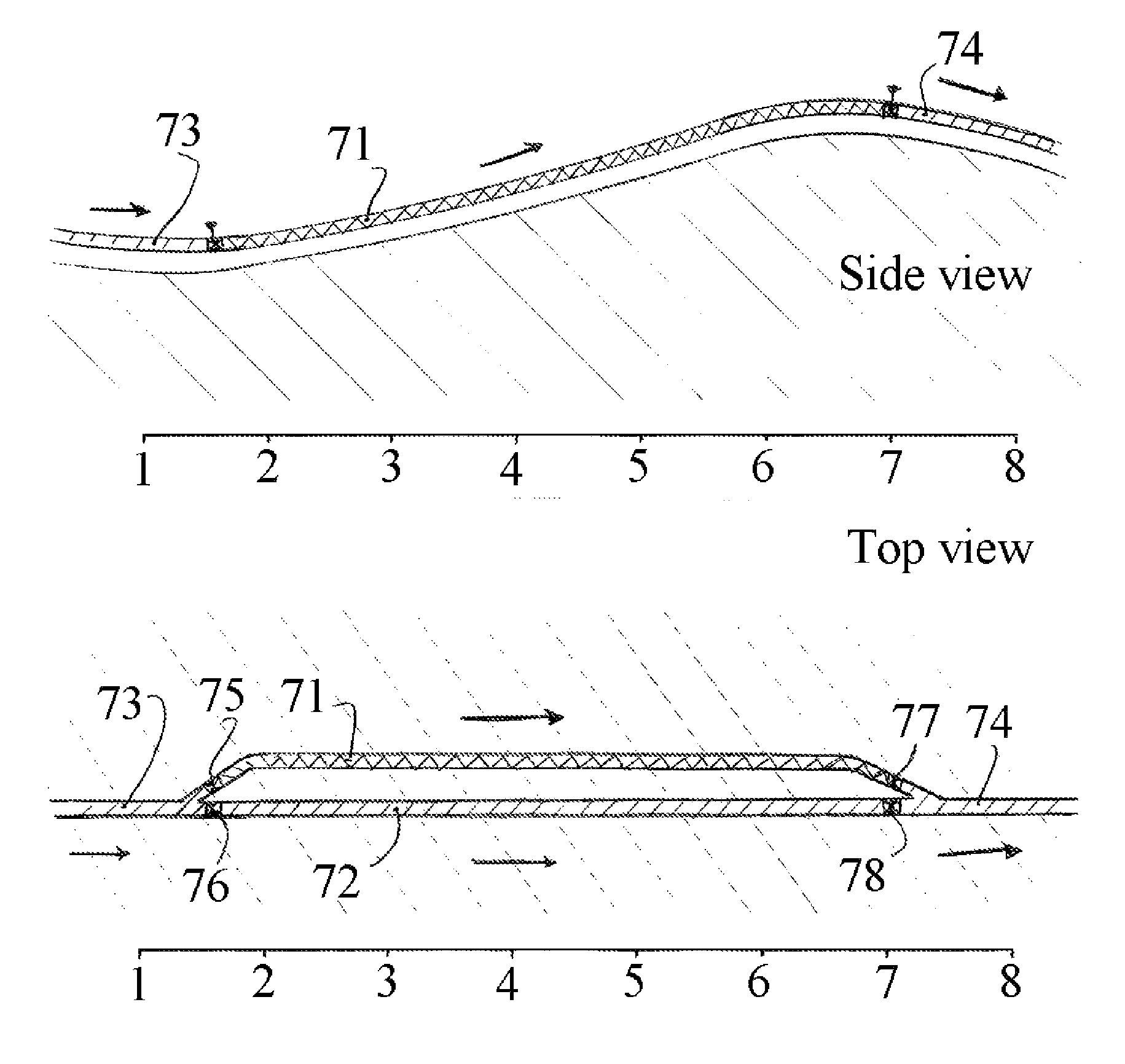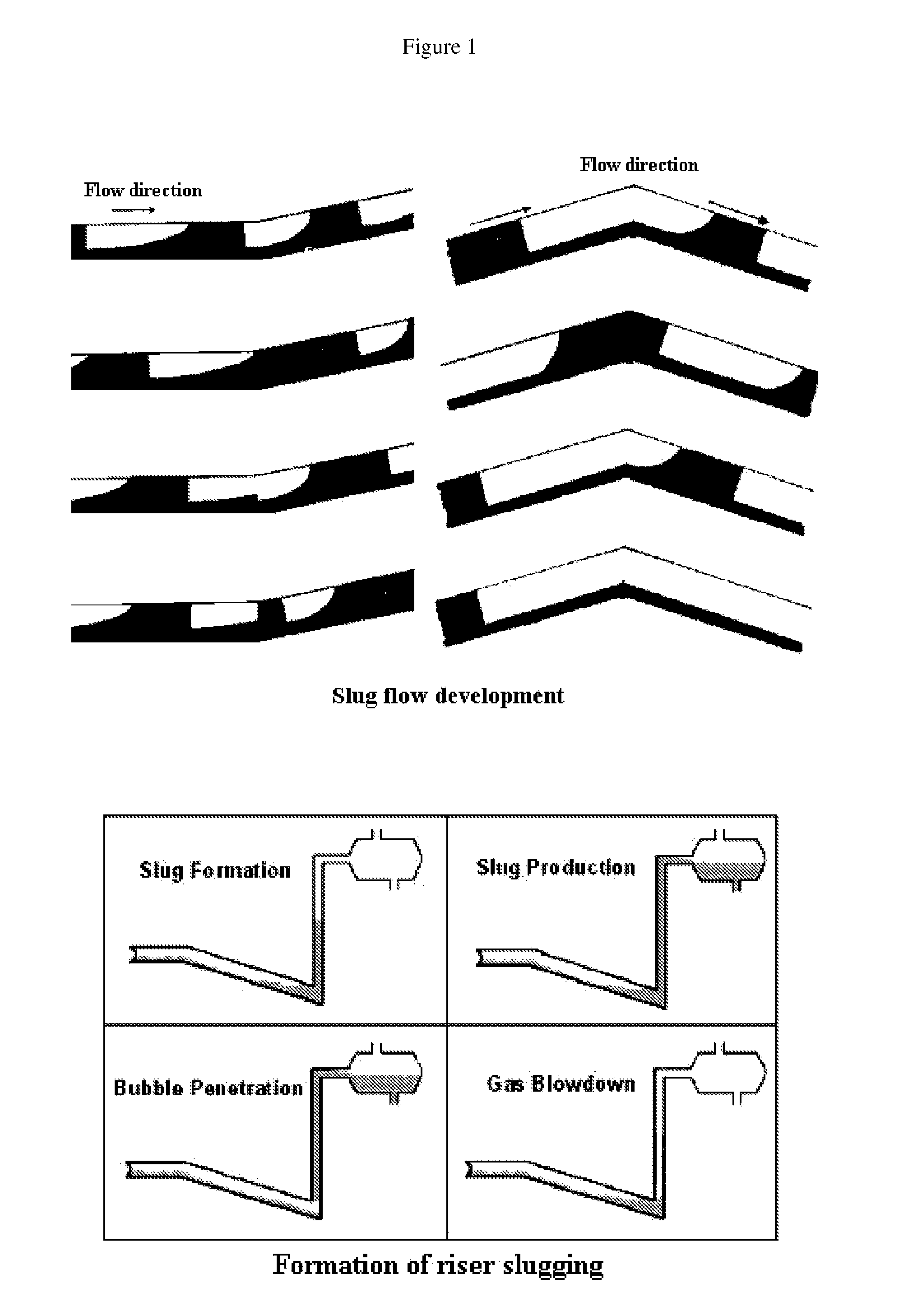Dual pathway riser and its use for production of petroleum products in multi-phase fluid pipelines
a technology of multi-phase fluid pipeline and riser, which is applied in the direction of branching pipes, sealing/packing, and well accessories, etc., can solve the problem of reducing the potential for any single large liquid slug to arrive at the surface facilities, and achieves the effect of improving the flow characteristics, reducing the cross-sectional area, and managing/improving the fluid flow characteristics
- Summary
- Abstract
- Description
- Claims
- Application Information
AI Technical Summary
Benefits of technology
Problems solved by technology
Method used
Image
Examples
first embodiment
[0056]Construction of a parallel MCS SCR riser can utilize any of the extrusion length / tubing configurations described in the Preferably, the lengths of each tube or extrusion with internal passageways should be as long as practicable to improve the efficiency of the two-phase flow effects conferred by the MCS riser. As a result, working with industry practice of pre-assembling 4-joint lengths of the riser, 4 bottom halves (half-shells) are first bolted together, then a pre-assembled bundle of MCS tubes / extrusions 4 joints long is placed into such 4 bolted bottom halves, then 4 half-shells tops are bolted to the bottom half-shells and to each other, and then all seams are welded together. If foam insulation is used, foam injection lines are integrated into the MCS extrusion / tubing bundle, such that after welding the shells together they can be withdrawn at a steady rate while injecting foam, thereby effectively providing foam access to the vacant spaces between the tubes or extrusi...
third embodiment
[0058]As per FIG. 12, this Third Embodiment of the invention consists of providing a dual flexible jumper line, providing fluid communication between the submerged platform (53) and the surface platform (55). One jumper line (51) is the original open-pipe type with the same termination fittings. The other jumper line (52) is an MCS pipeline (including a plurality of individual pipes, preferably round), such MCS small-diameter tubes preferably only integrated inside the rising / inclining part of the jumper pipeline, together with a pre-mixing device to more-evenly distribute the fluid phases prior to entering the plurality of individual tubes.
[0059]As is practice, the main riser terminates at a submerged platform with an output gooseneck-shaped termination fitting, where the attached flexible jumper line hangs from, such that the angle of its downward incline is similar to the gooseneck's incline, limiting strain. As per the invention, one design configuration is as shown in side and ...
PUM
 Login to View More
Login to View More Abstract
Description
Claims
Application Information
 Login to View More
Login to View More - R&D
- Intellectual Property
- Life Sciences
- Materials
- Tech Scout
- Unparalleled Data Quality
- Higher Quality Content
- 60% Fewer Hallucinations
Browse by: Latest US Patents, China's latest patents, Technical Efficacy Thesaurus, Application Domain, Technology Topic, Popular Technical Reports.
© 2025 PatSnap. All rights reserved.Legal|Privacy policy|Modern Slavery Act Transparency Statement|Sitemap|About US| Contact US: help@patsnap.com



